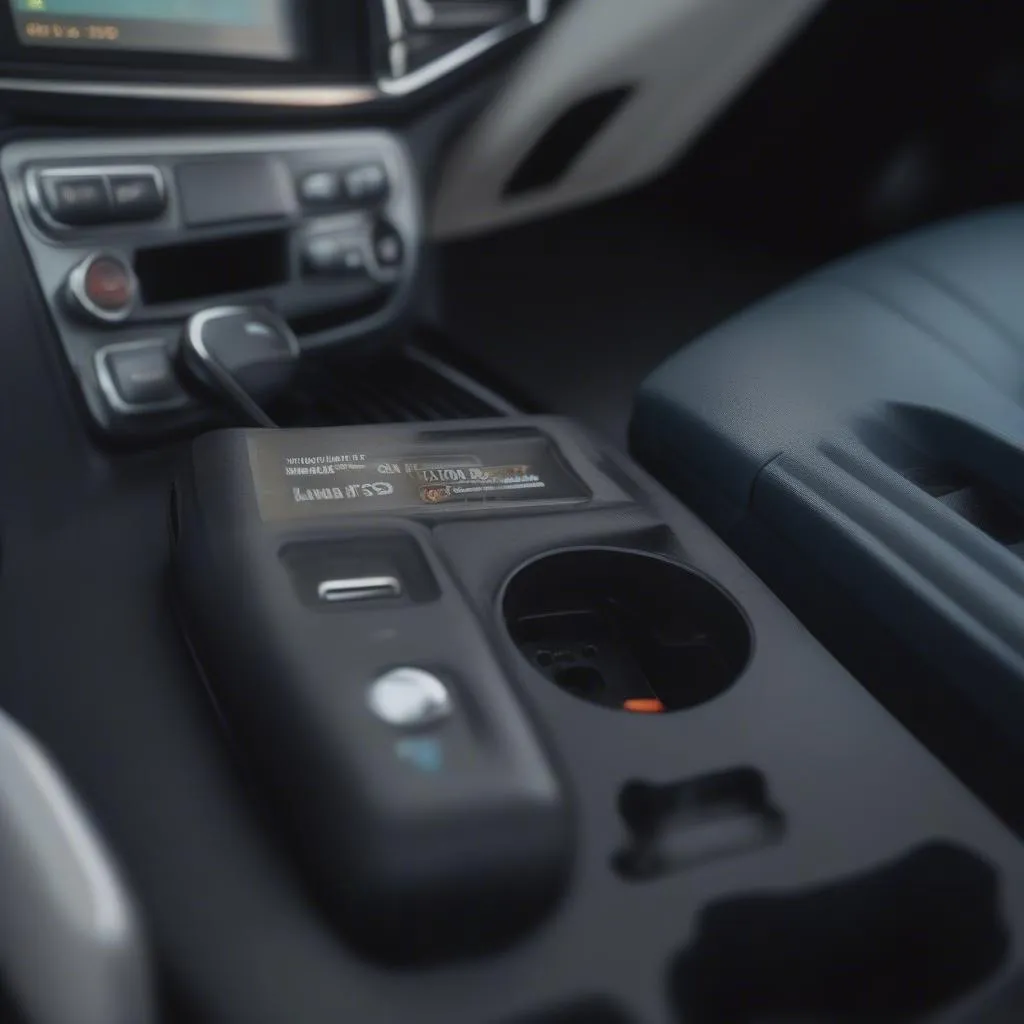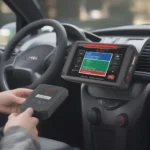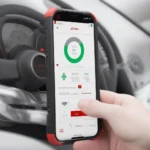Understanding the ins and outs of your BMW E39’s health just got easier with an OBD2 scanner. Whether you’re a seasoned DIY mechanic or a BMW enthusiast looking to demystify those pesky dashboard lights, an OBD2 scanner can be your best friend. This comprehensive guide delves into everything you need to know about OBD2 scanners for your BMW E39.
Why You Need an OBD2 Scanner for Your BMW E39
Your BMW E39 is a marvel of German engineering, but even the most reliable cars need a little TLC from time to time. An OBD2 scanner acts as your car’s translator, converting complex engine data into readable codes that pinpoint potential issues.
Here’s why an OBD2 scanner is a must-have for any BMW E39 owner:
- Diagnose Engine Problems: Decipher those cryptic dashboard warning lights like “Check Engine,” “ABS,” or “Airbag” with ease.
- Save Money on Repairs: Identify problems early on, potentially preventing costly repairs down the line.
- Enhanced Control Over Your Car: Gain a deeper understanding of your E39’s performance and identify areas for improvement.
- DIY Maintenance: Become your own mechanic and tackle minor issues confidently.
Choosing the Right OBD2 Scanner for Your BMW E39
With a plethora of OBD2 scanners on the market, finding the perfect one for your E39 might seem overwhelming. Consider these factors:
Compatibility: Ensure the scanner explicitly states compatibility with BMW models, specifically the E39 (manufactured between 1995-2003).
Functionality:
- Basic Scanners: Read and clear basic engine codes. Ideal for DIY enthusiasts.
- Mid-Range Scanners: Offer additional features like live data streaming, freeze frame data, and emissions readiness tests.
- Professional-Grade Scanners: Provide advanced diagnostics, coding, and programming capabilities. Typically used by professional mechanics.
Budget: OBD2 scanners range from affordable basic models to high-end professional tools. Determine your needs and budget accordingly.
obd2 scanner for bmw e39: Find Your Perfect Match – Explore our curated selection of top-rated OBD2 scanners tailored specifically for your BMW E39.
Understanding OBD2 Codes
Once you’ve scanned your E39, you’ll be greeted by a series of alphanumeric codes. These codes are standardized by the Society of Automotive Engineers (SAE), making them universally understandable.
Code Structure:
- First Character: Indicates the system the code relates to (e.g., “P” for Powertrain, “B” for Body, “C” for Chassis, “U” for Network).
- Second Character: Specifies whether the code is generic (0) or manufacturer-specific (1).
- Third Character: Identifies the specific system or subsystem affected (e.g., “1” for Fuel and Air Metering, “2” for Fuel and Air Injection, “3” for Ignition System).
- Last Two Characters: Represent the specific fault condition.
Example:
- P0420: Powertrain (P), Generic (0), Catalyst System Efficiency Below Threshold (420)
Resources for Code Interpretation:
- OBDFree Code Lookup: Enter your code into our comprehensive database for a detailed explanation and potential solutions.
- Vehicle Repair Manuals: Your E39’s repair manual provides in-depth information on specific codes and their associated repair procedures.
Beyond Basic Diagnostics: Advanced Features
While reading and clearing codes is invaluable, many OBD2 scanners offer advanced features to take your E39 diagnostics to the next level:
Live Data Streaming: Monitor real-time sensor data like engine RPM, coolant temperature, oxygen sensor readings, and more. This feature is invaluable for identifying intermittent problems and monitoring system performance.
Freeze Frame Data: Captures a snapshot of your engine’s parameters at the exact moment a fault code was triggered. This data provides valuable insights into the conditions leading up to the fault.
Emissions Readiness Tests: Check if your E39’s emission control systems are functioning correctly, essential for passing emissions tests.
Can I use obd2 scanner on bmw? Yes! Find out which OBD2 scanners are compatible with your BMW model and explore their capabilities.
Common OBD2 Codes for BMW E39
Here are some frequently encountered OBD2 codes for the BMW E39 and their potential causes:
- P0171 (System Too Lean Bank 1): Vacuum leaks, faulty mass airflow sensor (MAF), or fuel pressure issues.
- P0300 (Random/Multiple Cylinder Misfire Detected): Worn spark plugs, faulty ignition coils, or vacuum leaks.
- P0440 (Evaporative Emission Control System Malfunction): Loose gas cap, faulty purge valve, or leaks in the EVAP system.
- P0135 (O2 Sensor Heater Circuit Malfunction (Bank 1, Sensor 1): Faulty oxygen sensor or wiring issues.
- P1411, P1413, P1415, P1416 (Secondary Air Injection System): Faulty secondary air pump, vacuum leaks, or clogged air injection hoses.
Remember: This is not an exhaustive list. Always refer to reliable sources for accurate code interpretation.
Conclusion: Empowering BMW E39 Ownership with OBD2 Scanners
An OBD2 scanner is an indispensable tool for any BMW E39 owner. It empowers you to take control of your car’s health, diagnose problems accurately, and potentially save on costly repairs. From basic code reading to advanced diagnostics, there’s an OBD2 scanner tailored to your needs and expertise.
obd2 scanner bmww e39: Unlock a world of knowledge about your BMW E39.


